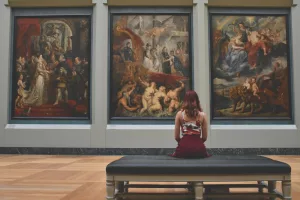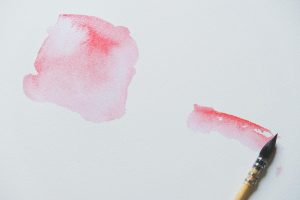Preserving your artwork is as much an art as creating it. Whether you’re an artist, collector, or hobbyist, understanding how to care for your pieces ensures they remain vibrant and intact for years to come. Let’s delve deeper into the best practices for preserving your artwork, with detailed insights and practical advice. Artwork, particularly pieces that hold sentimental or monetary value, demands careful handling and storage. Every movement carries the risk of damage, so it’s important to use acid-free and archival materials during any transportation. These materials prevent chemical interactions that can harm the artwork over time. When storing, aim for a cool, dry place, as temperature and humidity fluctuations can wreak havoc on delicate materials. Direct sunlight is a notorious culprit in fading colors, so keep pieces away from windows or any bright light sources. When handling artwork, cotton gloves are your best friend. They prevent the oils and dirt from your hands from transferring onto the surface of the artwork, which can lead to deterioration over time. For storage, it’s crucial to keep the artwork either upright or flat, depending on its design and medium, to prevent bending or warping. Padding and support are equally important, especially for framed pieces, to eliminate pressure points that could damage the artwork.
In-Depth Storage Solutions
Consider using a climate-controlled storage room if you have an extensive collection. This ensures that temperature and humidity are consistently regulated. For those without this luxury, silica gel packets can help control moisture levels in smaller spaces. In addition, consider using archival boxes or sleeves for smaller pieces to shield them from dust and light.
Custom Shelving and Racks
For larger collections, custom shelving and racks can make a world of difference. Adjustable shelving can accommodate different sizes and shapes, ensuring each piece is stored securely. When designing these systems, consider using materials like powder-coated steel, which resists rust and provides stability.
The Use of Art Crates
For high-value or delicate pieces, art crates offer maximum protection. Custom-built crates with foam or felt linings can prevent movement during transportation. These crates can be particularly useful if you plan to move or ship your artwork frequently.
Conservation Framing: An Investment
Conservation framing is more than just a protective measure; it’s a long-term investment in your artwork’s future. This method employs acid-free materials, UV-protective glass, and meticulous techniques that accommodate natural changes in the artwork due to environmental factors. Not only does this protect against fading and warping, but it also maintains the piece’s original aesthetic.
Choosing the Right Materials
When selecting materials for conservation framing, opt for museum-grade mat boards and backing. These materials are designed to provide an additional layer of protection against pollutants and environmental changes. UV-filtering glass or acrylic can also be a game-changer, reducing the risk of fading caused by exposure to light. A great example is Tru Vue Optium Museum Acrylic, known for its anti-reflective and UV-blocking properties.
DIY Framing vs. Professional Services
While DIY framing can be cost-effective, professional services provide expertise and quality that can significantly enhance preservation. Professionals can ensure the correct materials and techniques are used, which can be especially important for valuable or antique pieces.
Regular Inspection and Maintenance
A proactive approach is key in maintaining your artwork’s condition. Regular inspections allow you to catch potential issues early. Check for signs like discoloration, mold spots, or tears. If detected early, these can often be remedied before causing significant damage. A professional conservator can assess and address any complications, ensuring the issue doesn’t escalate.
Common Maintenance Practices
Dusting should be done with a soft brush or microfiber cloth to avoid scratches. Avoid household cleaners as they can contain chemicals harmful to the artwork. For frames or glass, use a damp cloth with distilled water to clean gently.
Establishing a Maintenance Schedule
Create a maintenance schedule to routinely check and care for your artwork. Monthly checks can help identify issues like dust accumulation or frame damage, while an annual deep inspection might involve professional evaluation for more serious concerns.
Environmental Control for Longevity
The environment plays a critical role in the preservation of artwork. Temperature and humidity are the two most critical factors. Aim for a stable temperature around 70°F (21°C) and relative humidity between 40-50%. Use dehumidifiers in humid climates and humidifiers in dry areas to maintain these levels.
The Impact of Location
Consider the placement of your artwork. Avoid hanging pieces above fireplaces or radiators where heat exposure is frequent. Similarly, air vents can cause temperature fluctuations and should be avoided. If natural light is unavoidable, UV window films can mitigate the impact.
Smart Home Technology for Monitoring
Leverage smart home technology to monitor environmental conditions. Devices like smart thermostats and humidity sensors can provide real-time data and alerts, allowing you to take immediate action if conditions become unfavorable for your artwork.
Advanced Conservation Techniques
Older or delicate artworks often require more than just preventive care. Conservation techniques such as cleaning, stabilization, and restoration can breathe new life into these pieces. However, it’s vital to work with a qualified conservator, as improper techniques can cause irreversible damage.
Restoration vs. Conservation
Understand the difference between restoration and conservation. Restoration aims to return the artwork to its original state, often involving new materials added to the piece. Conservation focuses on preserving the current state and preventing further deterioration. Each has its place, but knowing when to apply which is crucial.
Case Study: The Sistine Chapel
A notable example of successful restoration is the Sistine Chapel ceiling. Michelangelo’s masterpiece underwent a complex restoration process that involved cleaning layers of grime and retouching faded areas while preserving the original intent and integrity of the artwork. This project highlights the importance and challenges of balancing restoration and conservation.
Building a Relationship with Professionals
Developing a relationship with a professional conservator can be invaluable. They can provide tailored advice and services that cater to the specific needs of your collection. Regular check-ups, much like a doctor’s visit, can prevent small issues from becoming significant problems.
Selecting the Right Conservator
When choosing a conservator, look for credentials such as membership in professional organizations like the American Institute for Conservation. Ask for examples of past work and check references to ensure their expertise aligns with your needs.
The Value of Workshops and Seminars
Attending workshops and seminars can deepen your understanding of art preservation. These events provide insights into the latest techniques and technologies in conservation, often featuring experts who share real-world experiences and case studies.
The Role of Documentation
Keeping thorough records of your artwork is another layer of protection. Document each piece with photographs, provenance, and any restoration work. This not only helps in case of damage but also adds value to the piece if you decide to sell it in the future.
Digital Tools for Record-Keeping
Utilize digital tools for organizing and storing your artwork’s documentation. Platforms like Artwork Archive can streamline the process, providing a secure and accessible way to manage your collection’s information.
Creating a Visual Database
Creating a visual database of your artwork can be incredibly useful. High-resolution images of each piece, along with detailed descriptions and historical context, can enhance records and provide a comprehensive overview of your collection.
Avoiding Common Mistakes
Many pitfalls can be avoided with a bit of foresight. One common mistake is using non-archival materials, which can lead to acid damage over time. Always check the labels to ensure materials are acid-free. Another common error is displaying artwork in direct sunlight, which accelerates fading.
Practical Tips for Everyday Care
Incorporate simple habits into your routine to protect your artwork. Avoid touching the surface directly and ensure that any changes in the display environment are gradual to prevent shock to the materials.
Learning from Mistakes
Learning from past mistakes can refine your preservation practices. Reflect on any previous incidents where artwork was damaged and analyze the cause. This reflection can help develop better strategies and prevent similar issues in the future.
Future-Proofing Your Collection
As your collection grows, anticipate future needs. Plan for additional storage space and consider insurance for high-value pieces. Being proactive can save time and money in the long run.
Insurance Considerations
Art insurance can protect against unforeseen events such as theft or natural disasters. Evaluate your collection regularly and update your policy to reflect current values.
Planning for Succession
Consider the future of your collection beyond your lifetime. Planning for succession involves deciding if pieces will remain in the family, be donated to institutions, or sold. Clear documentation and communication with family or trustees can ensure your wishes are honored.
Preserving artwork is a commitment, but with the right knowledge and resources, you can ensure your pieces are admired for generations to come. Remember, each piece is unique, and understanding its specific needs is the cornerstone of effective preservation. Keep learning, adapting, and cherishing the art that enriches your life.



